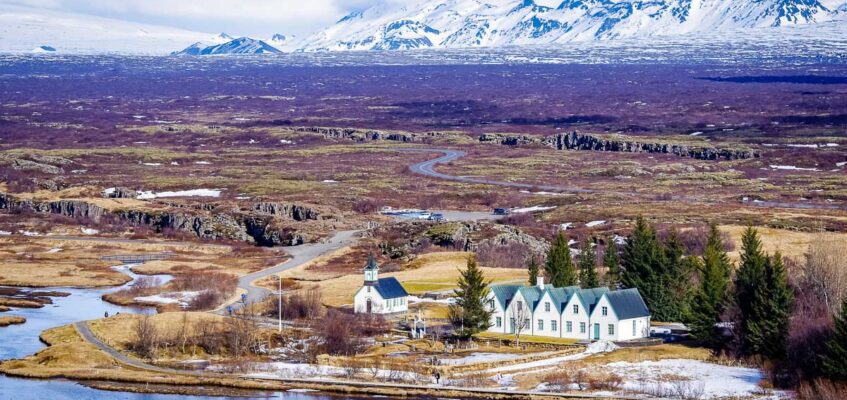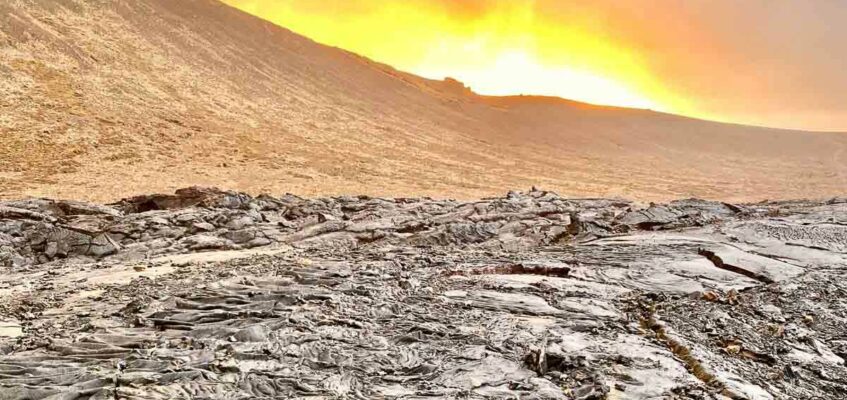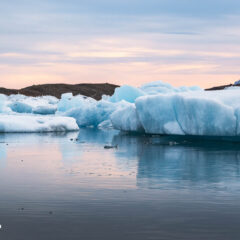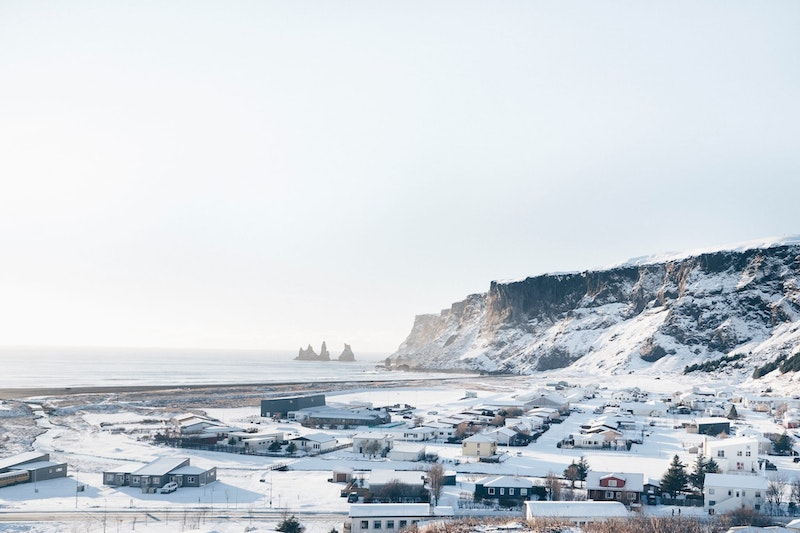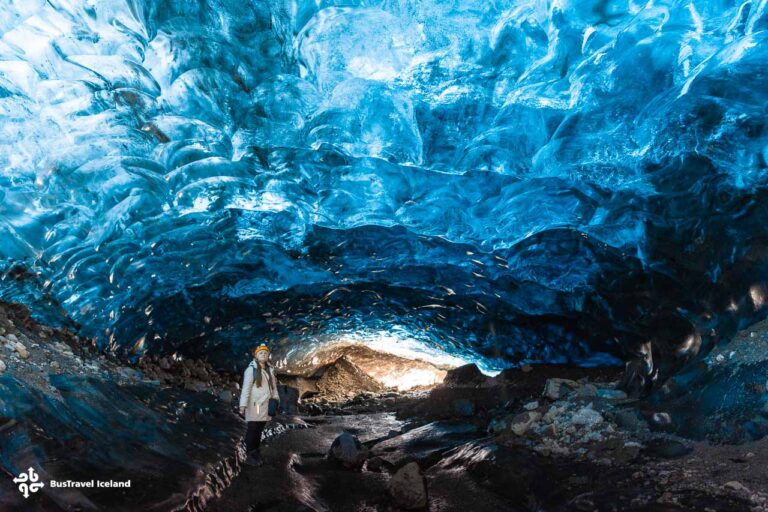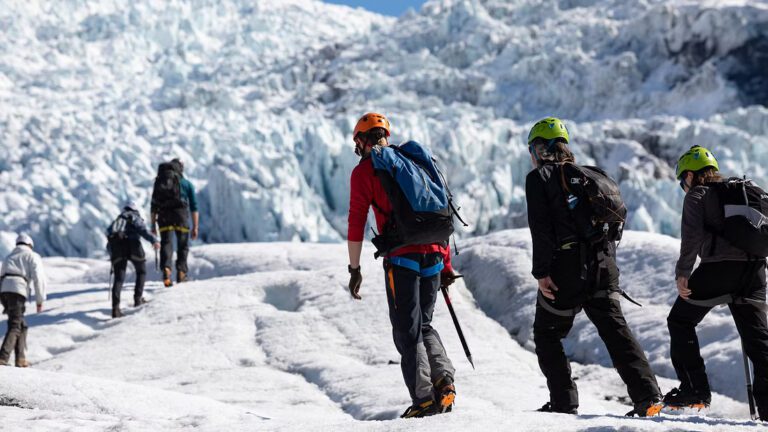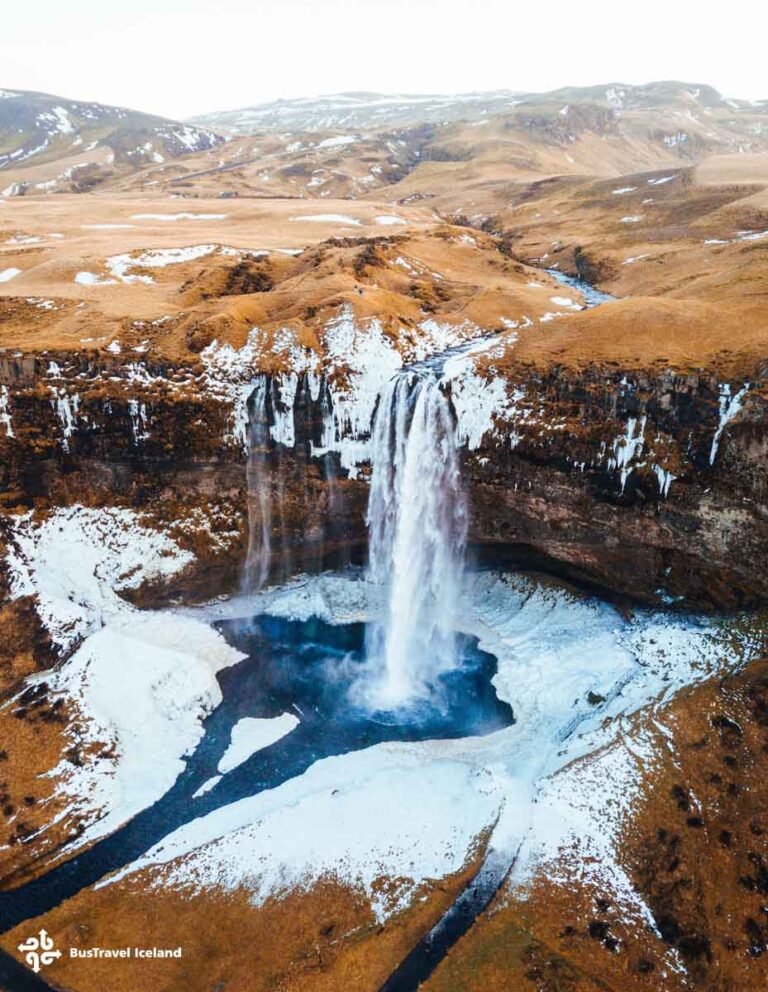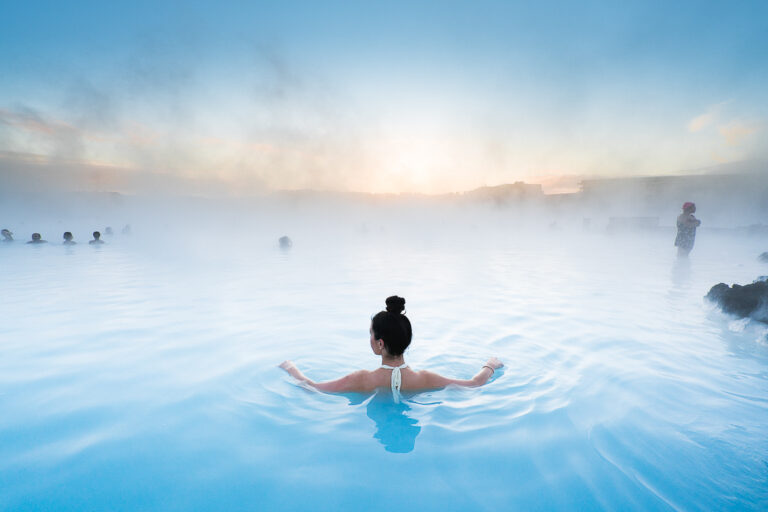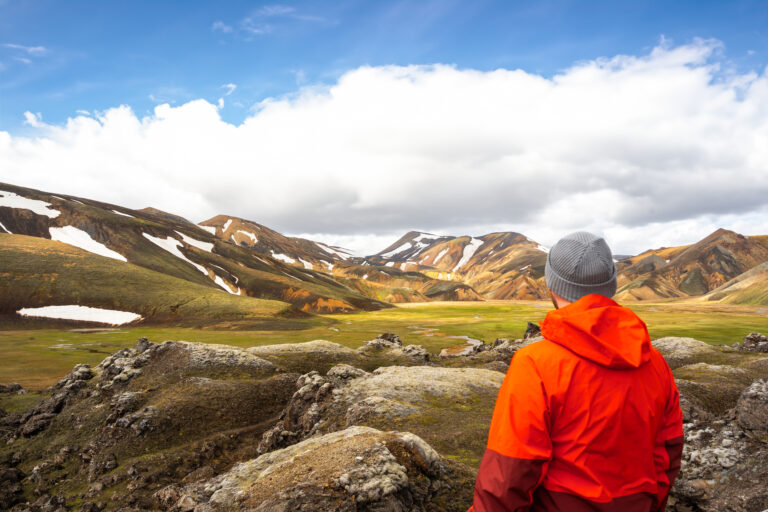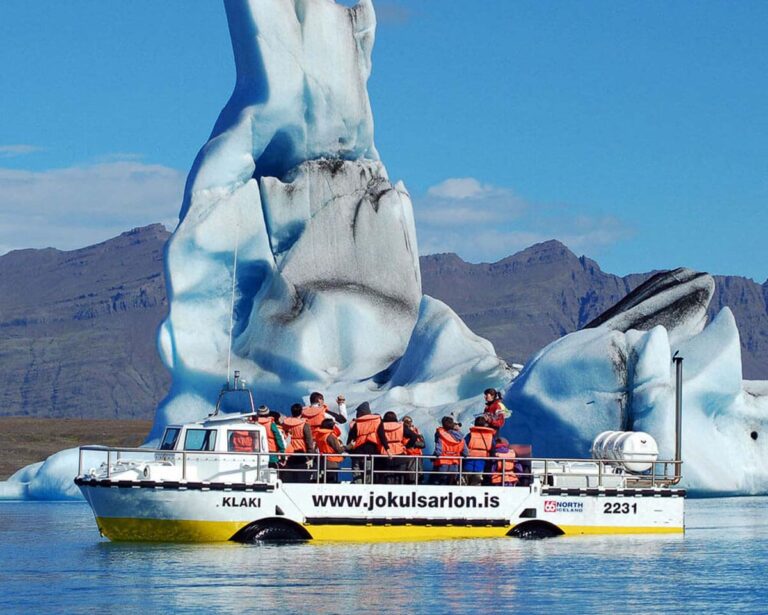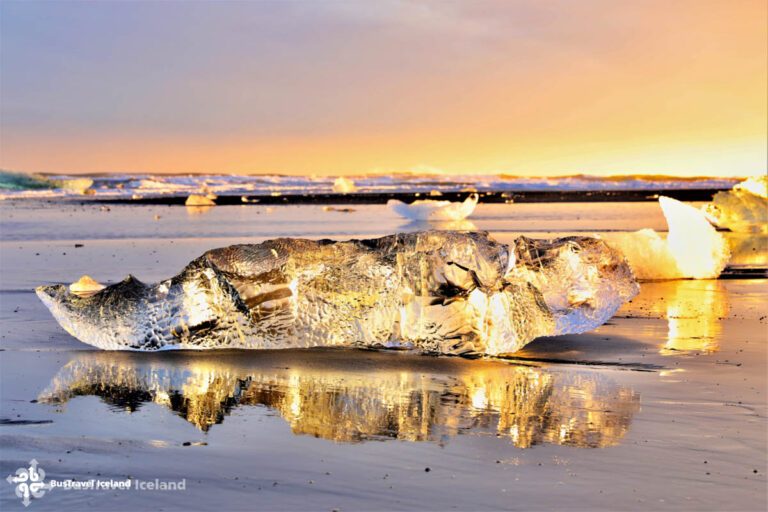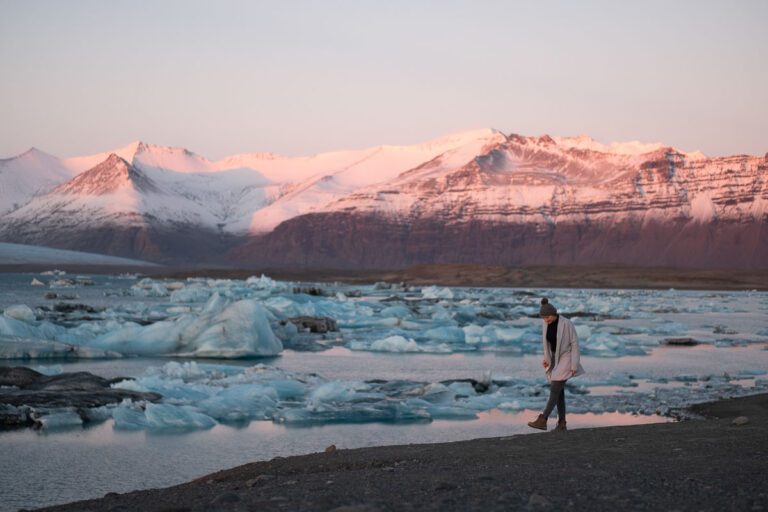Vatnajokull Glacier: A Comprehensive Guide to Europe’s Largest Ice Cap
- South Iceland
- 19 Aug 2023
Explore the icy wonderland of Vatnajökull Glacier in Iceland, Europe's largest glacier. Experience unique ice caves, thrilling glacier hikes, and breathtaking landscapes. Don't miss the enchanting Jokulsarlon glacier lagoon and the sparkling Diamond Beach, as well as the captivating waterfalls nearby. Make Vatnajökull the highlight of your Icelandic adventure.
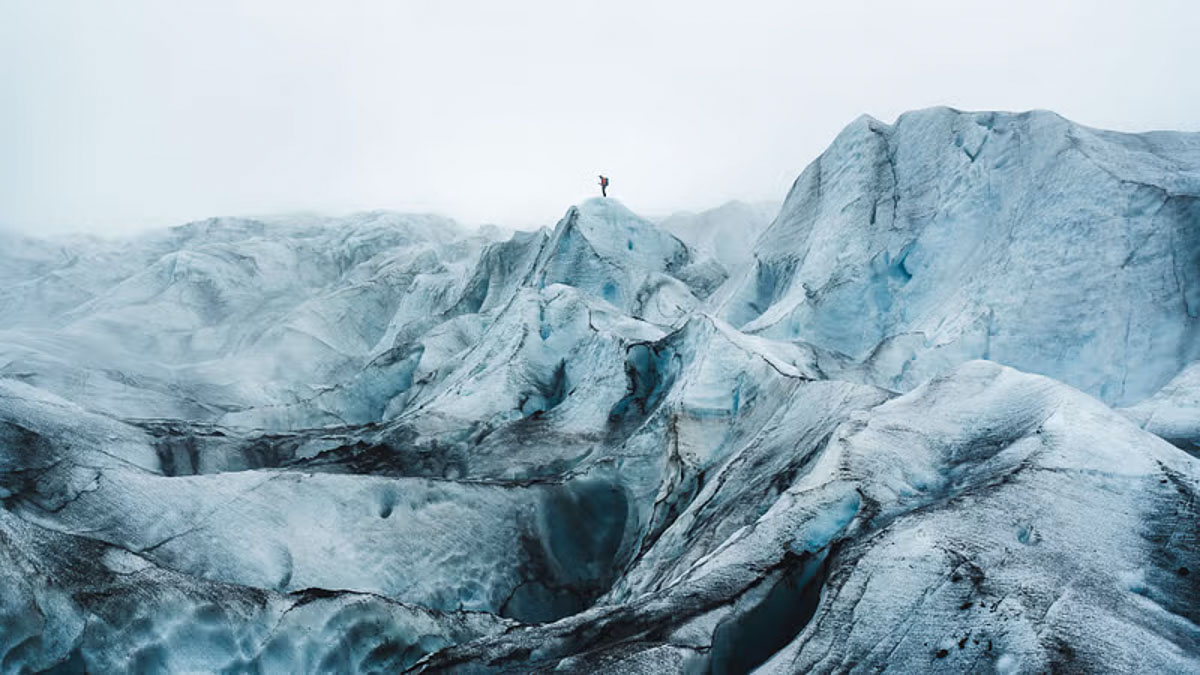
The Vatnajökull Ice Cap
Vatnajökull Glacier, also known as the Glacier of Lakes, is the largest ice cap in Iceland, and the second largest in Europe by area. Covering around 8% of Iceland’s total area, its size is truly impressive. The ice cap is situated in the southeast of Iceland, with coordinates 64.4220° N and 16.7902° W. Stretching over 7,900 square kilometers, this ice formation is nothing short of magnificent.
The Vatnajökull ice cap consists of various ice domes and numerous outlet glaciers that surge at irregular intervals. One of the striking features of Vatnajökull is the presence of blue ice, which is a result of the intense pressure from the weight of the glacial ice. This pressure expels air bubbles from the ice, resulting in a denser and more compact ice formation than regular glacial ice.
The vast Vatnajökull Glacier is not only beautiful, but it also holds historical and scientific significance. It is important to note that this ice cap has lost more than 15% of its volume in the past century. Like other glaciers in Iceland, such as Langjökull and Snæfellsjökull, Vatnajökull is shrinking due to climate change. This ongoing reduction in size emphasizes the pressing need to protect and preserve the ice for future generations.
To fully appreciate the majesty of Vatnajökull Glacier, you must experience the wonders of its ice caves. These natural formations can be explored through guided tours, offering visitors an up-close encounter with the astounding glacial ice within the ice cap.

Geographical Overview
Where is Vatnajokull glacier located?
Vatnajokull Glacier, the largest and most voluminous glacier in Iceland, holds the title for the second-largest ice cap in Europe. Situated in the southeast region of the country, this magnificent glacier is approximately positioned at coordinates 64.4220° N, 16.7902° W. The glacier is easily accessible from Iceland’s Ring Road, which encircles the entire island.
Area and Volume
Covering a remarkable 7,900 square kilometers, Vatnajokull Glacier spans across nearly 8% of Iceland’s total area. The ice cap’s vast expanse extends over several territories, enveloping sections of the eastern, southern, and western regions of the country.
The glacier showcases an average ice thickness of more than 3,000 feet (900 meters), with general elevations lying around 5,000 feet above sea level. In some sections, such as the Öræfajökull in the south, the glacier rises to a staggering 6,952 feet (2,119 meters) on Hvannadalshnjúkur, the highest peak in Iceland. The massive volume of the glacier conceals various mountains, valleys, and plateaus beneath its icy surface, and is an integral part of Iceland’s geography and natural beauty.

Volcanic Activity and Eruptions
Volcanoes Underneath
Vatnajökull glacier, located in Iceland, is known for its volcanic activity. Beneath this massive glacier, there are several active volcanoes, which contribute to geothermal activity and impressive eruptions. The most famous subglacial volcanoes under Vatnajökull are Grímsvötn, Öræfajökull, and Bárðarbunga.
Grímsvötn, residing in the glacier’s center, is considered the most active volcano in Iceland. It has a history of frequent eruptions, with some of the most recent ones occurring in 2011 and 2004. Öræfajökull, on the southern edge of Vatnajökull, is the least active of the three. Its last known eruption took place in 1728, but the event was significant with a Volcanic Explosivity Index (VEI) of 4. Bárðarbunga, the third major subglacial volcano, experienced a notable eruption in 2014 and 2015. There are other lesser-known volcanoes as well, such as Askja, which contribute to the overall volcanic activity beneath Vatnajökull.
Glacial Floods and Eruptions
Volcanic eruptions beneath Vatnajökull often lead to a phenomenon called jökulhlaup. The term jökulhlaup refers to glacial floods or outbursts caused by subglacial volcanic eruptions that melt the ice and release massive amounts of water. One glacier well-known for jökulhlaups is Skeiðarárjökull, which is located near Grímsvötn. Geothermal heat creates a subglacial lake within the volcano’s crater, leading to massive amounts of meltwater during volcanic eruptions.
During a volcanic eruption beneath a glacier like Vatnajökull, the heat generated by molten lava causes the ice to melt rapidly. This water mixes with ash, volcanic debris, and sediment to create a large and powerful outburst flood, which can cause significant damage to anything in its path. As lava flows, it can also cause the ice to crack and break apart, releasing large blocks of ice that can cascade downhill like a landslide.
The Vatnajökull glacier is home to various active volcanoes and is known for its significant volcanic activity and eruptions. The occurrence of jökulhlaups accompanying these eruptions further highlights the powerful forces at work beneath Vatnajökull.
Vatnajökull National Park
Vatnajökull National Park, established in 2008, is one of the three national parks in Iceland and covers the entire Vatnajökull glacier along with its surrounding areas. This national park is known for its stunning landscapes, diverse recreational activities, and thriving flora and fauna.
Skaftafell and Jökulsárgljúfur
At the heart of the Vatnajökull National Park are two once-independent protected areas, Skaftafell Nature Reserve and Jökulsárgljúfur Reserve, which now form part of this extensive park. Skaftafell is well-renowned for its treeless plains, glacial rivers, and iconic hiking trails leading to the famous Svartifoss waterfall and the glacier’s edge. Moreover, its campsite offers visitors a comfortable stay amidst picturesque surroundings.
On the other hand, Jökulsárgljúfur is a canyon with a dramatic landscape featuring powerful waterfalls like Dettifoss, Europe’s most powerful waterfall, along with unique basalt rock formations. The area is dotted with scenic hiking trails that boast magnificent views of the glacial river and the canyon’s rugged beauty.
Flora and Fauna
Vatnajökull National Park is home to an impressive array of flora and fauna. Despite the harsh climate and challenging terrain, various plant species thrive in the area, including mosses, lichens, and hardy flowering plants. These plants provide shelter and nourishment to a range of insects and bird species.
Additionally, the park is home to some of Iceland’s most iconic species such as the Arctic fox, the only native terrestrial mammal, and herds of wild reindeer, which are often sighted grazing in the park’s more vegetated areas during the summer months. Birdlife is thriving, with many cliffs, canyons, and riverbanks providing ideal nesting sites for species like the puffin, the white-tailed eagle, and the fulmar.

Major Attractions Nearby Vatnajokull
Jökulsárlón Glacier Lagoon and Diamond Beach
One of the most popular attractions in Vatnajökull National Park is the Jökulsárlón Glacier Lagoon, situated on the southeast side of the glacier near the bustling town of Höfn. This beautiful lagoon is famous for its floating icebergs and is a must-see for anyone visiting Iceland’s South Coast. Not far from Jökulsárlón, you’ll find the equally stunning Diamond Beach, featuring black sands scattered with glistening icebergs, giving it the appearance of a beach full of diamonds.
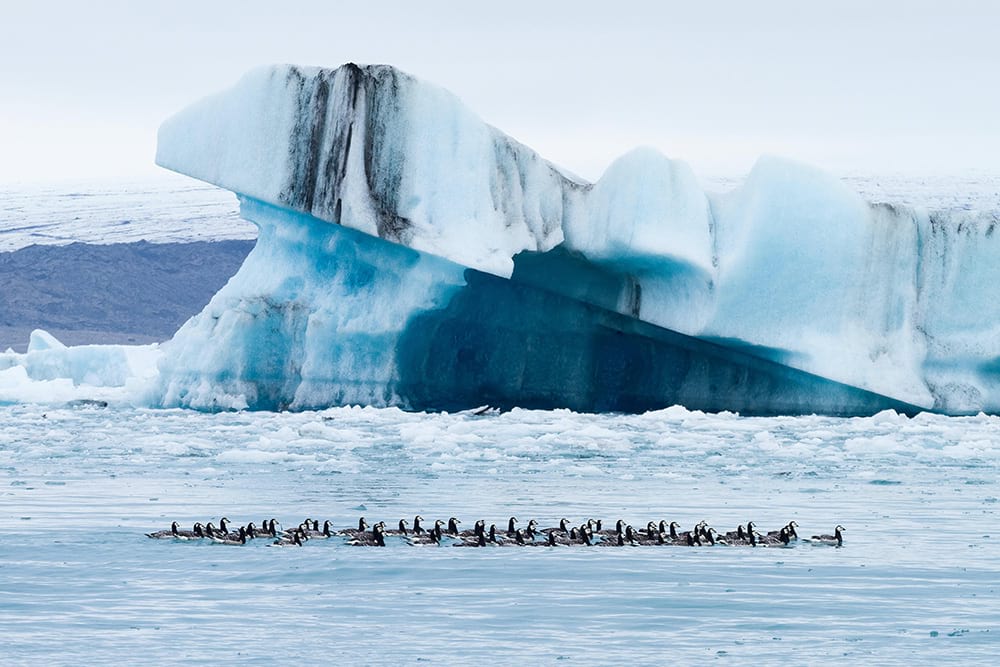
Morsárfoss Waterfall
Morsárfoss waterfall, a hidden gem of Vatnajökull National Park and Iceland’s tallest waterfall, soaring to a stunning 240 meters (790 feet). Revealed to the world in 2007 due to the retreat of the Morsárjökull Glacier, an offshoot of the vast Vatnajökull Glacier, this waterfall is a testament to nature’s ever-changing beauty.
The melting of the glacier has given birth to a series of mesmerizing waterfalls, known collectively as Morsárfossar, each a unique spectacle. Situated near the dynamic Morsárjökull outlet glacier in the lush Skaftafell Nature Preserve, the Morsárfoss area is a living canvas, continually reshaped by the forces of nature as the area constantly changes.

Ice Caves
Vatnajökull is famous for its beautiful ice caves, formations that vary in size, shape, and color. During the winter months, you have the opportunity to join guided ice caving tours and explore these awe-inspiring natural structures. With their vivid shades of blue and crystal-clear walls, ice caves are a unique and unforgettable part of any visit to Vatnajökull National Park.
In addition to these standout attractions, Vatnajökull National Park offers a wealth of other amazing experiences for visitors, such as glacier hikes, snowmobiling, and wildlife watching. While discovering this incredible area, you’ll be enamored by the diverse natural wonders waiting to be explored.

Dettifoss Waterfall
Another remarkable natural wonder in the Vatnajökull National Park is Dettifoss Waterfall, located in the park’s northern region. Known as the most powerful waterfall in Europe, Dettifoss is fed by the glacial river Jökulsá á Fjöllum and is an impressive sight to behold.
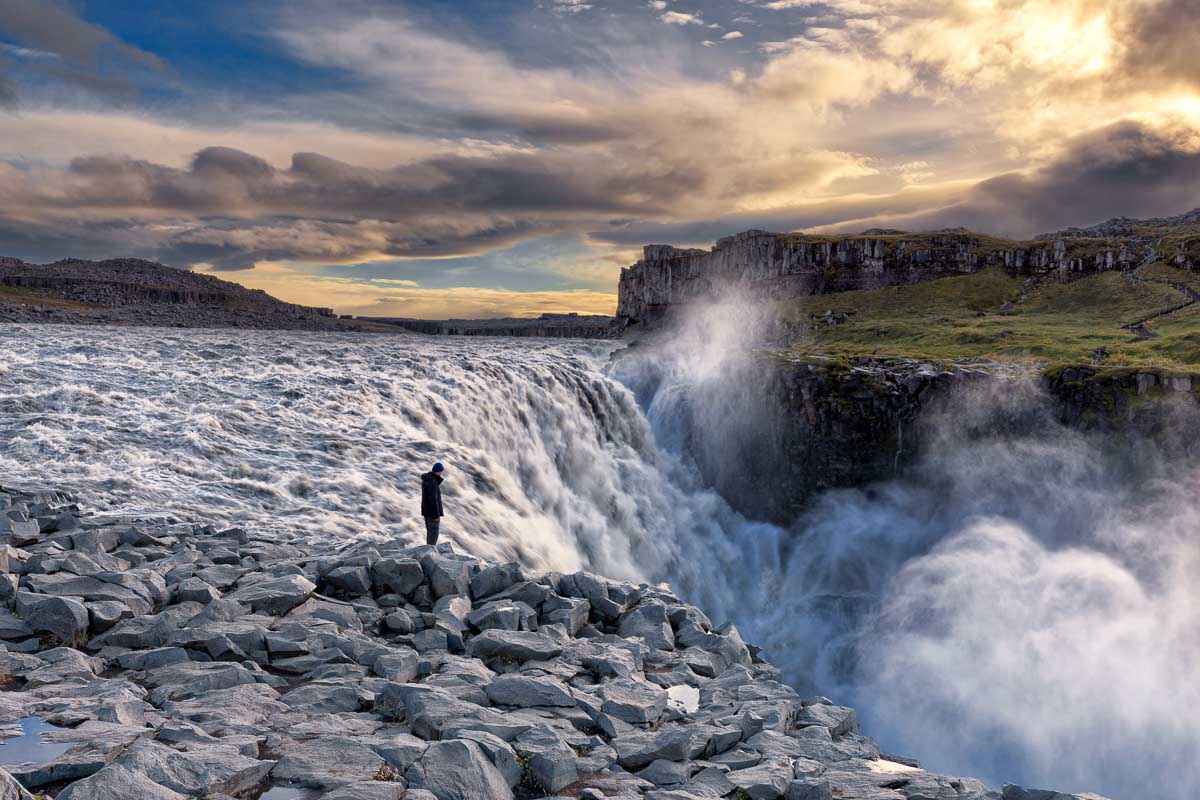
Outdoor Activities
As you explore the stunning Vatnajokull Glacier, numerous outdoor activities offer unforgettable experiences for visitors. It’s crucial that you share these activities, ensuring future travelers can make the most of their time in this incredible region.
One popular activity is hiking within the Vatnajokull National Park. With breathtaking landscapes and varied terrains, adventurers can traverse well-marked trails suitable for all abilities. While exploring the park, you can also engage in bird watching and fishing, further connecting with the region’s natural surroundings.
For those seeking adrenaline-pumping adventures, glacier hiking is an unforgettable experience. With experienced guides leading the way, you can trek across the dramatic ice formations, learning about the glacier’s history and its impact on Iceland’s geography. It’s essential to utilize appropriate gear and follow safety guidelines, guaranteeing an enjoyable and secure expedition.
Various tours celebrate the magnificent features of the Vatnajokull Glacier. Options such as boat tours, kayaking excursions, and super jeep tours provide visitors with unique perspectives and memorable encounters with the glacier. Additionally, those with a passion for winter sports can participate in snowmobile tours, taking in the expansive icy landscapes at thrilling speeds.
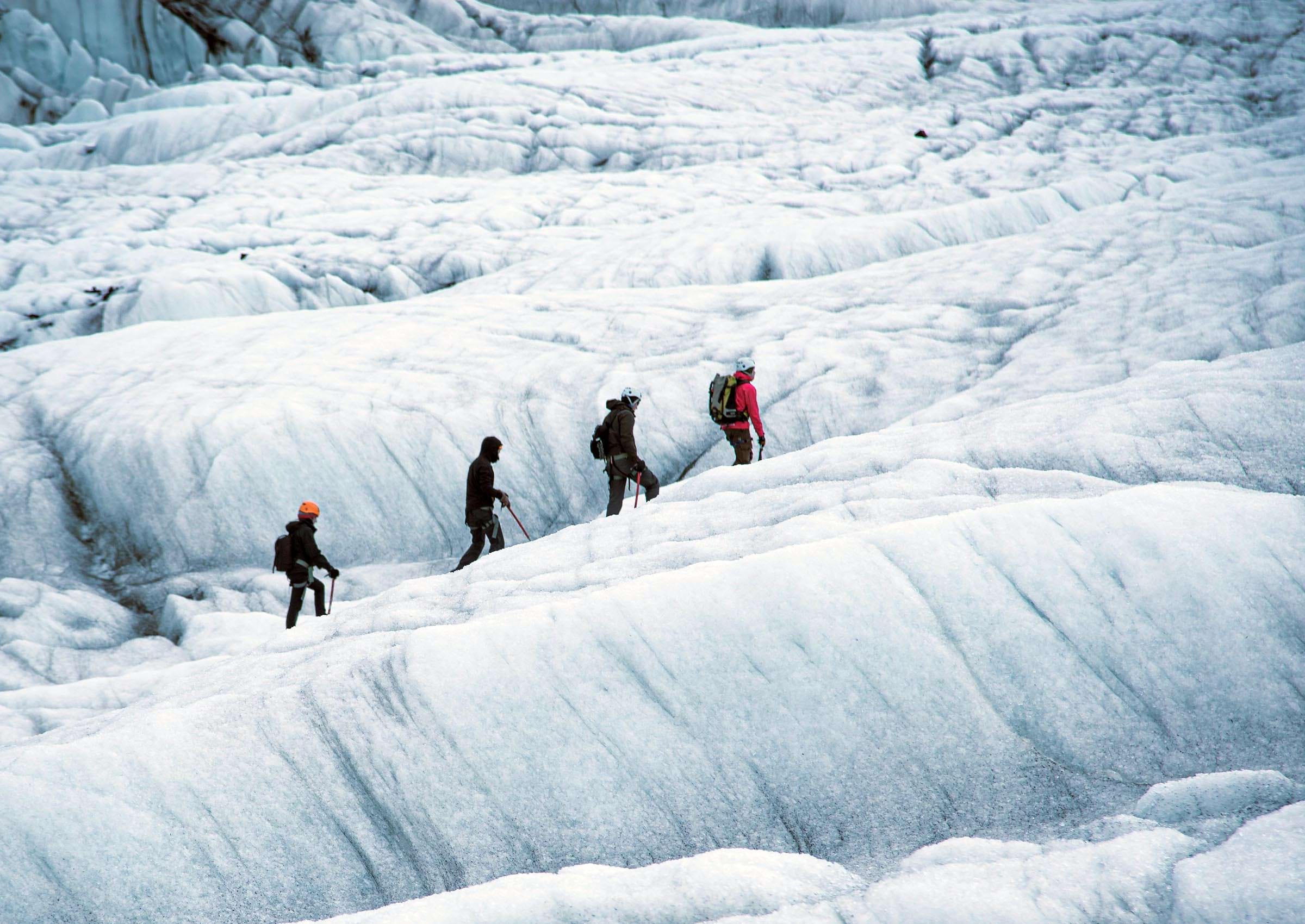
Climate and Overall Impact
As you observe the Vatnajökull glacier, it’s clear that climate change has a significant impact on its retreat and the surrounding environment. Vatnajökull, Iceland’s largest and most voluminous ice cap, has been retreating since the end of the 18th century, with the rate of retreat accelerating in recent years due to global warming.
The climate around Vatnajökull experiences increased temperatures and changes in precipitation patterns, leading to a reduction in snowfall and overall ice mass. Less snowfall negatively affects the glacier’s ability to recover and maintain its size, contributing to more rapid melting.
As the glacier retreats, the landscape undergoes dramatic transformations. The formation of new landforms, such as moraines, meltwater channels, and outwash plains, creates a dynamic environment. This change contributes to the unique wilderness properties of Vatnajökull National Park, where fire and ice shape the terrain.
The retreat of Vatnajökull also affects the rivers and bodies of water surrounding the ice cap. Melting glaciers can cause an increase in river discharge and sediment transport, which can lead to changes in the hydrological system and the overall landscape.
It’s important to seek to understand and mitigate the human impacts on the Vatnajökull glacier and the surrounding environment. By managing wilderness areas and promoting low-impact tourism, everyone is encouraged to preserve the unique landscape and respond to the challenges posed by climate change.
Frequently Asked Questions about Vatnajokull
What is the age of the Vatnajökull glacier?
I can’t give you an exact age of the Vatnajökull glacier, as glaciers are formed, advance, and retreat over long periods of time. However, it is good to know that Vatnajökull has been present in Iceland for thousands of years and plays an important role in the country’s geology and landscape.
How to visit Vatnajökull glacier from Reykjavik?
To visit Vatnajökull glacier from Reykjavik, you have several options. These include renting a car and driving for about four to five hours through the scenic landscapes of Iceland. Alternatively, you can join an organized tour that will take care of all transportation and logistics for you. Some tours even offer activities like glacier hiking, ice caving, and more as part of the experience.
Which are the nearby attractions in Vatnajökull National Park?
Vatnajökull National Park offers a variety of attractions for visitors to enjoy. Some notable nearby attractions are the breathtaking Jökulsárlón glacier lagoon, where you can take a boat tour among the icebergs, and Svartifoss waterfall, a stunning cascade surrounded by basalt columns. Many visitors also participate in activities like glacier hiking, ice cave exploration, and cross-country skiing for truly unforgettable experiences in this remarkable landscape.

